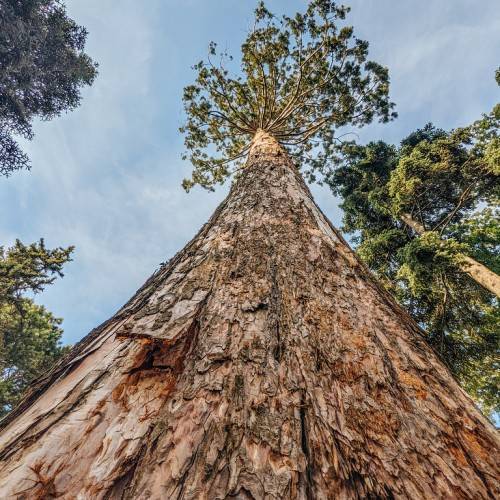
giant sequoia
Sequoiadendron giganteum
Cycle:
Perennial
Watering:
Average
Hardiness Zone:
6 - 8
Flowers:
Flowers In Spring
Sun:
Full sun, Part sun/part shade
Soil:
Well-drained
Cones:
Yes
Leaf:
Yes
Growth Rate:
Moderate
Maintenance:
Moderate
Care Level:
Medium
watering
Giant sequoia trees require regular watering throughout the growing season. During their first 2 to 3 years, they need to be watered deeply every 5 to 7 days. After the first 3 years, the trees should be watered deeply and slowly once per month to ensure deep, proper saturation of the soil surrounding the roots. The amount of water required each time will differ based on soil type, climate, and the overall size of the tree. Generally, for a mature sequoia, 1 to 2 inches of water is appropriate per application. However, if the soil is very sandy or rocky and well-drained, more water may be necessary. Additionally, if there is an extended period of less than average rainfall, supplemental watering should be provided.
sunlight
Giant sequoias need at least 6 hours of full sun each day, ideally in the morning. However, young seedlings need more than 6 hours of full sun. In addition, these trees will benefit from some filtered or partial sun during the day. For optimal growth, try to provide the tree with 6 to 8 hours of sunlight. When situating the tree, make sure to leave adequate space for it to spread its branches and soak up enough sunlight. It is important to avoid direct sun during the hottest part of the day, as the plant may suffer from sun-scorch.
pruning
Giant sequoia trees benefit from pruning, though it is not absolutely necessary. Pruning should be done in late winter or early spring, after any danger of frost has passed. Pruning should consist of thinning out overcrowded branches to allow more light into the tree and removing any dead, damaged, or diseased branches. It is important to make sure that a proper balance is achieved between removing too much of the tree and removing not enough of the tree. If the pruning is too severe, the tree may be unable to rebound and may even die.
